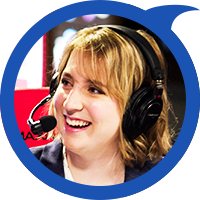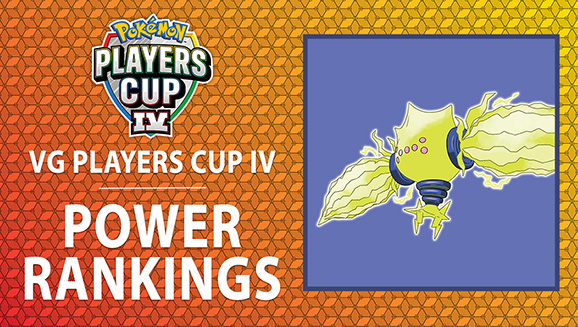Our expert panelists look at the most prominent Pokémon in the tournament.
Fans of the Pokémon video games won’t want to miss the Pokémon Players Cup IV video game Region Finals when the exciting matches stream on July 17 and 18, 2021. Before they begin, it’s a good idea to catch up on which Pokémon and strategies to watch out for in the Series 9 format, which prohibits the most powerful Legendary Pokémon from play—unlike the previous Players Cup. Our panel of experts is here to keep you in the know as the epic battles unfold.
The broadcast begins at 11:00 a.m. PDT each day on July 17 and 18. You can catch matches both days on Twitch, Facebook, YouTube, and Twitter. Visit the Players Cup IV streaming information page for the full schedule and details.

In much the same way as it returns to its Trainer after a powerful Transistor-boosted Volt Switch, Regieleki returns to our rankings for the second time since its debut in the Crown Tundra. This time, however, it tops our list, and its rise is likely due to both the surging popularity of Dynamaxing Regieleki and its potential when paired with strong supports. Although Dynamax Regieleki really only hits hard with Max Lightning, a single attack is enough to finish off most enemies if Regieleki holds a Life Orb or Magnet. Regieleki’s damage can be boosted even further by a partner’s Helping Hand—usually from Clefairy or Gothitelle—allowing Regieleki to charge through even the toughest opponents.
Clefairy also shores up Regieleki’s mediocre defenses by drawing attacks with its move Follow Me and passively reduces the damage its partner takes with its Friend Guard Ability. On the other hand, Gothitelle traps enemy Pokémon on the field with its Shadow Tag Ability. In practice, this means that Regieleki can either annihilate weak opposing Pokémon without switching out, or Gothitelle can hold Pokémon that are favored against Regieleki (such as Grass-type or Ground-type Pokémon) on the field, allowing them to be picked off by another partner. — Aaron Traylor

Unlike the Players Cup II Power Rankings, where only Single Strike Urshifu received a spot in the top 10, both it and Rapid Strike Urshifu surge to second place in this iteration of Players Cup rankings. Urshifu’s Rapid Strike form has found its way onto many teams as a way to deal with Therian Forme Landorus and Incineroar, since Surging Strikes hits both of them with supereffective damage and brushes off the effect of Intimidate by always dealing a critical hit, which ignores stat reductions. Rapid Strike Urshifu also plays a key role on Gigantamax Coalossal teams by being able to activate its Steam Engine Ability and Weakness Policy held item with Aqua Jet, while also being able to pressure the opponent with its own powerful attacks.
On the other hand, Single Strike Urshifu is used with more aggressive duos such as Venusaur and Torkoal or with teams that center around another Water type like Blastoise. Even though Rapid Strike Urshifu’s Water typing is strong against some of the more popular Pokémon, Single Strike Urshifu’s Dark typing does have a few niche defensive advantages, such as providing immunity to status moves used by common threats with the Prankster Ability like Thundurus and Grimmsnarl. Urshifu also able to withstand a Grassy Glide from Rillaboom better than its Rapid Strike counterpart. — Justin Burns

Therian Forme Landorus has been a mainstay for the majority of the Series 9 format. Its unique Flying- and Ground-typing, combined with its Intimidate Ability, provides a great supportive and offensive package for a lot of Trainers and their teams.
The early stages of the Series 9 format saw Assault Vest as the most common item run on Landorus. Although this is still a very popular combination, a lot of players are now trying for a bit more damage output with the Life Orb item.
The Life Orb gives Landorus a 30% power increase to its attacks, which helps turn some close KOs on opposing threats into guaranteed ones. It also allows Landorus to use Max Guard or Protect in tight situations (these moves can’t be used with Assault Vest), allowing Trainers to preserve Landorus for late game situations. Swords Dance has seen a big rise in usage when Landorus has been given a Life Orb to hold, allowing Landorus to mitigate opposing Intimidate cycling while helping to create momentum shifts for the user with a big attack boost. In turn, Swords Dance turns into Max Guard when Landorus is Dynamaxed, which again allows for dodging some big threatening attacks. — Lee Provost

Incineroar remains one of the strongest Pokémon in the game going into the Pokémon Players Cup IV. In Series 8, Incineroar worked best as a support to its restricted Pokémon teammate by protecting it with Intimidate, Fake Out, and Parting Shot with little regard for the opposing Pokémon it would go up against.
With Series 9 banning restricted Pokémon once again, players will need to be more careful about when Incineroar hits the field, as it will need to focus more on disrupting its opponent rather than going all-in on protecting its teammates. Many players have started leaning into this by opting to teach Incineroar Taunt to stop a variety of Pokémon from executing their intended strategies. With Taunt, Incineroar can stay on the field longer in front of passive Pokémon and then try to land a key Parting Shot when a Pokémon limited by Taunt is pressured into switching to a more offensive Pokémon.
Players using Incineroar will need to avoid being caught off guard by a timely Dynamax or Intimidate-ignoring Pokémon like Thundurus or Urshifu, but if the initial offensive push can be withstood, a well-played Incineroar can maintain an advantage throughout the battle. — Justin Burns

Rillaboom has been a tournament staple ever since its Grassy Surge Hidden Ability became available. Combining this Ability with Grassy Glide makes Rillaboom a threatening Pokémon to face. Grassy Glide is an increased priority move, allowing Trainers to focus more on Rillaboom’s Attack and defensive stats and ignore its Speed. While Rillaboom has quite high Attack, it is mainly used to deal with often-seen Pokémon weak against Grass-type attacks like Tapu Fini and Rapid Strike Urshifu.
Recently Rillaboom has risen through the ranks as an offensive option, but at the same time it’s also been used more as a supportive pick in Registeel teams. Grassy Surge’s ability to hinder the power of Ground-type moves, not to mention the recovery that Grassy Terrain provides, has made it a perfect fit alongside Registeel. — Alex Gomez

Grimmsnarl is a very versatile Pokémon that can serve multiple roles in different teams, largely due to its incredible Prankster Ability. Prankster gives status moves increased priority, meaning that they will usually take effect before the opposing Trainer’s Pokémon can use their own move. In its usual supportive role, Grimmsnarl provides support to its allied Pokémon by using Light Screen and Reflect to boost its team’s defensive stats. This pairs up nicely with the Light Clay item, which allows Grimmsnarl’s screens to stay on the field for eight turns instead of five. Paired up with offensive support in the form of Spirit Break, Grimmsnarl can hinder its opponents even more by dropping their Special Attack.
While Grimmsnarl is great at reducing incoming damage, it can also hinder opponents in other ways. With its Prankster Ability and the move Trick, Grimmsnarl can swap held items with the opposing Pokémon. In this case, Grimmsnarl is commonly carrying a Lagging Tail or an Eject Button to force the opposing Trainer into an uncomfortable position. — Alex Gomez

Glastrier’s continued influence on the Series 9 metagame cannot be understated. You’d think with the continued popularity of disadvantageous combinations like Venusaur and Torkoal that this Legendary Pokémon would lose its place in these power rankings, but here we are. So, why does it continue to have such a strong presence despite the number of Pokémon out there able to counter it?
Glastrier is so powerful that opponents must ensure their team can counter it; a team that lacks any specific answer will fall to a quick series of knockouts and Chilling Neigh Attack boosts. Similar to how the Ultra Beasts gained popularity because of their Beast Boost Ability, opponents have to be careful once Glastrier is sent out onto the field to avoid giving it both a knockout and a stat increase.
The threat it brings is so strong that it influences what Pokémon you pick at Team Preview, since it mandates that you bring whatever Pokémon is on your team that can counter it. Pair Glastrier with the right Pokémon that can counter those picks—such as Water-type Pokémon for Fire-type counters, or a strong Flying type or Max Airstream user for Fighting-type counters—and you have a solid team core that will be consistent throughout a tournament run, something super important when playing through Swiss rounds like in the latest iteration of the Player’s Cup. — Gabby Snyder

One of the interesting things I like to watch when Pokémon are popular across multiple formats or for extended periods of time is how the usage of that Pokémon changes. Porygon2 is the perfect Pokémon to examine this way, given how key it has been as a Trick Room user throughout Pokémon Sword and Pokémon Shield competitive play. By holding an Eviolite and knowing Recover, it has the defensive prowess required to remain on the field throughout the entire five turns Trick Room is active, regardless of whether it was you or your opponent who set it up in the first place.
While Porygon2 is still the preferred Trick Room user for many Trainers, recent changes in the metagame have allowed Porygon2 to take on a bit of a different role. The rise in popularity of Pokémon with access to both Fake Tears—used to lower the target’s Special Defense by two stages—and Prankster—an Ability that allows Pokémon using non-damage dealing moves to go first—has given Porygon2 the opportunity to deal big damage when the situation requires it. A Dynamaxed Porygon2 becomes a threat in and of itself with access to Max Strike through Hyper Beam or Tri-Attack, Max Lighting through Thunderbolt, or even Max Hailstorm through Ice Beam. — Gabby Snyder

Celesteela has risen to meteoric heights for the Pokémon Player’s Cup IV after a lull in activity before Pokémon Player’s Cup II. Classically, Celesteela combines the defensive strength of its Flying- and Steel-typing with its offensive advantages on the field, which are admittedly slow and methodical. However, in Series 9, players have leveraged Dynamax to unleash Celesteela’s full offensive capability. Trainers blast away with Celesteela’s strong Dynamax attacks, and if it knocks out an opposing Pokémon, Beast Boost can raise an offensive stat to keep the pressure on, even after Dynamax ends.
In the Alola region, Celesteela relied on its natural Attack and weight to fire off powerful Heavy Slams, but in Galar, it focuses on special moves, with Air Slash and Flash Cannon to utilize the same-type attack bonus and Flamethrower and Meteor Beam to help it cover more of the type chart. In 2019’s Ultra Series, Celesteela was chosen as a defensive counterplay to the insanely powerful Xerneas. Now, however, Celesteela has taken a page out of Xerneas’ book. Some Trainers choose to give their Celesteela a Power Herb, allowing it to use Meteor Beam to gain a Sp. Atk boost and then immediately attack. Alternatively, other Trainers have Celesteela hold Life Orb or Assault Vest so that Celesteela can make full use of Dynamax from Turn 1. — Aaron Traylor

Incarnate Forme Thundurus has been known predominantly as an offensive powerhouse during its time in the Pokémon Sword and Pokémon Shield era. More recently, Trainers have taken a slightly different stance, opting to use its supportive Prankster Ability rather than its more offensive Hidden Ability, Defiant. Prankster allows Thundurus to utilize its deep pool of support move options, which all gain a priority boost to allow Thundurus to attack before most opponents can move.
With status moves like Eerie Impulse, which drops an opponent’s Special Attack by two stages, Trainers have used Thundurus to effectively shut down opposing threats like Zapdos, Regieleki, and other powerful threats in the format that use special attacks. Scary Face and Thunder Wave are both options Thundurus can utilize to devastating effect to dictate Speed stats in favor of its slower partners, and Taunt helps shut down opposing setups before they are able to implement a strategy of their own. — Lee Provost
Parting Shots
 Justin Burns: This Pokémon Players Cup will be the first one to repeat a
ruleset from a previous Players Cup. As a result of this, players will have had
the time to practice and refine strategies to a degree that was not previously
possible. Now that the dust is starting to settle on the metagame, teams are
turning back to some of the strongest Pokémon and strategies from before the
release of The Crown Tundra or even The Isle of Armor.
Justin Burns: This Pokémon Players Cup will be the first one to repeat a
ruleset from a previous Players Cup. As a result of this, players will have had
the time to practice and refine strategies to a degree that was not previously
possible. Now that the dust is starting to settle on the metagame, teams are
turning back to some of the strongest Pokémon and strategies from before the
release of The Crown Tundra or even The Isle of Armor.
The most notable Pokémon in this group are Togekiss and Dragapult, which are making a resurgence after dropping in usage while players experimented with newer strategies. Togekiss still has one of the most well-rounded capabilities of any Pokémon, with high stats across the board, Follow Me for support, and its combination of Super Luck and Scope Lens to break through defenses with critical hits. In a similar way, Dragapult’s preferred moveset remains largely unchanged, as it can still run through unprepared teams with Max Moves and its incredible natural Speed. These two Pokémon may not be in the power rankings, but expect to see many players using at least one of them in the Region Finals.
 Alex Gomez: Teams with Blastoise and Registeel have recently
surfaced in the metagame after a successful run in the Pokémon Players Cup IV
Region Qualifiers. The team works by exerting offensive pressure with sweepers
and bulky support Pokémon like Blastoise and Landorus. These Pokémon create
openings in the opposing Trainers’ teams that Registeel is later able to take
advantage of. While the opponent burns huge amounts of resources to deal with
the offensive pressure, Registeel can come from the back and set up a win
condition late in the game with moves like Amnesia and Iron Defense. Registeel’s
immense Defense stat allows the Pokémon to very effectively utilize the
combination of Body Press and Iron Defense. Additionally, Registeel’s Clear
Body Ability negates stat decreases, allowing it to become an impenetrable wall
and seal up the game.
Alex Gomez: Teams with Blastoise and Registeel have recently
surfaced in the metagame after a successful run in the Pokémon Players Cup IV
Region Qualifiers. The team works by exerting offensive pressure with sweepers
and bulky support Pokémon like Blastoise and Landorus. These Pokémon create
openings in the opposing Trainers’ teams that Registeel is later able to take
advantage of. While the opponent burns huge amounts of resources to deal with
the offensive pressure, Registeel can come from the back and set up a win
condition late in the game with moves like Amnesia and Iron Defense. Registeel’s
immense Defense stat allows the Pokémon to very effectively utilize the
combination of Body Press and Iron Defense. Additionally, Registeel’s Clear
Body Ability negates stat decreases, allowing it to become an impenetrable wall
and seal up the game.
 Lee Provost: The big question everyone is asking going into the Pokémon Players
Cup IV is: can we see Coalossal take home another championship? This answer is:
well, maybe. I think Coalossal is an exceptionally strong team archetype that I
feel has a good chance to add another trophy to its mantle.
Lee Provost: The big question everyone is asking going into the Pokémon Players
Cup IV is: can we see Coalossal take home another championship? This answer is:
well, maybe. I think Coalossal is an exceptionally strong team archetype that I
feel has a good chance to add another trophy to its mantle.
But maybe there is a new wave of domination on the horizon. Charizard and Venusaur have both had their time in the sun during the finals of Pokémon Players Cup III, which leaves only one of the original Kanto starters left to make a mark on this event. Blastoise has seen a lot of recent success and is slowly building momentum within the Series 9 format. I can genuinely see Blastoise riding the waves of victory into the finals and sinking any opposition along the way. Its ability to support with options like Fake Out and Yawn are extremely valuable tools that also allow for a more supportive role if Trainers need it, not to mention Blastoise being a huge powerhouse with its signature G-max Cannonade attack.
 Gabby Snyder: Something that continually surprises me about the Series 9
metagame is just how bulky teams are. With high usage of Pokémon like Zapdos,
Regirock or Registeel, Grimmsnarl, and others, I think we’re in for some games
where board position and defensive switching takes a higher priority than going
for big damage right off the bat. When watching these games, I like to remind
myself of what each player needs to accomplish to win the game and what Pokémon
need to be on the field in order to move closer to that end game. While the
action at the start of the game may be a bit slower, with both Trainers
switching their Pokémon around to try and gain an advantage, it’s super
satisfying when the board is set and those KOs start racking up!
Gabby Snyder: Something that continually surprises me about the Series 9
metagame is just how bulky teams are. With high usage of Pokémon like Zapdos,
Regirock or Registeel, Grimmsnarl, and others, I think we’re in for some games
where board position and defensive switching takes a higher priority than going
for big damage right off the bat. When watching these games, I like to remind
myself of what each player needs to accomplish to win the game and what Pokémon
need to be on the field in order to move closer to that end game. While the
action at the start of the game may be a bit slower, with both Trainers
switching their Pokémon around to try and gain an advantage, it’s super
satisfying when the board is set and those KOs start racking up!
 Aaron Traylor: The story of a region’s era in VGC is told by the players who
make the best use of its unique gameplay mechanics. In Galar, Dynamax obviously
has the largest impact, and my first thought when Pokémon Sword and Pokémon
Shield were released was that the world’s best Trainers would make the most
of its powerful effects. While that may still be true, the Pokémon Players Cups
have revealed a subtler truth. There is a unique group of Gigantamax Pokémon—Venusaur,
Charizard, Blastoise, and Coalossal—that take advantage of a certain style of
Gigantamax Move. G-Max Cannonade, G-Max Volcalith, and G-Max Wildfire all deal
damage to both opponents over four turns. Trainers making full use of this
secondary effect have consistently risen to the top of large tournaments across
multiple formats of VGC battles.
Aaron Traylor: The story of a region’s era in VGC is told by the players who
make the best use of its unique gameplay mechanics. In Galar, Dynamax obviously
has the largest impact, and my first thought when Pokémon Sword and Pokémon
Shield were released was that the world’s best Trainers would make the most
of its powerful effects. While that may still be true, the Pokémon Players Cups
have revealed a subtler truth. There is a unique group of Gigantamax Pokémon—Venusaur,
Charizard, Blastoise, and Coalossal—that take advantage of a certain style of
Gigantamax Move. G-Max Cannonade, G-Max Volcalith, and G-Max Wildfire all deal
damage to both opponents over four turns. Trainers making full use of this
secondary effect have consistently risen to the top of large tournaments across
multiple formats of VGC battles.
Of these Pokémon, only Blastoise has yet to see success on a major stage, and the Pokémon Players Cup IV might be its time. Blastoise comes by its offense a little less quickly than its counterparts, with no consistent way to gain a Speed advantage other than Shell Smash, which takes a precious turn of setup. However, Water-type attacks are valuable, and Blastoise has also access to a wide variety of supportive moves like Fake Out, Helping Hand, and Yawn. Blastoise may be able to balance both support and offense alongside its G-Max Cannonade to drive home its place as a Galar centerpiece.
The roar of Gigantamax Venusaur, Charizard, Blastoise, and Coalossal will thunder throughout the Pokémon Players Cup IV, future tournaments, and maybe even the next World Championships. Look closely at how players both utilize and respond to the damage dealt by these moves.
About the Panel

